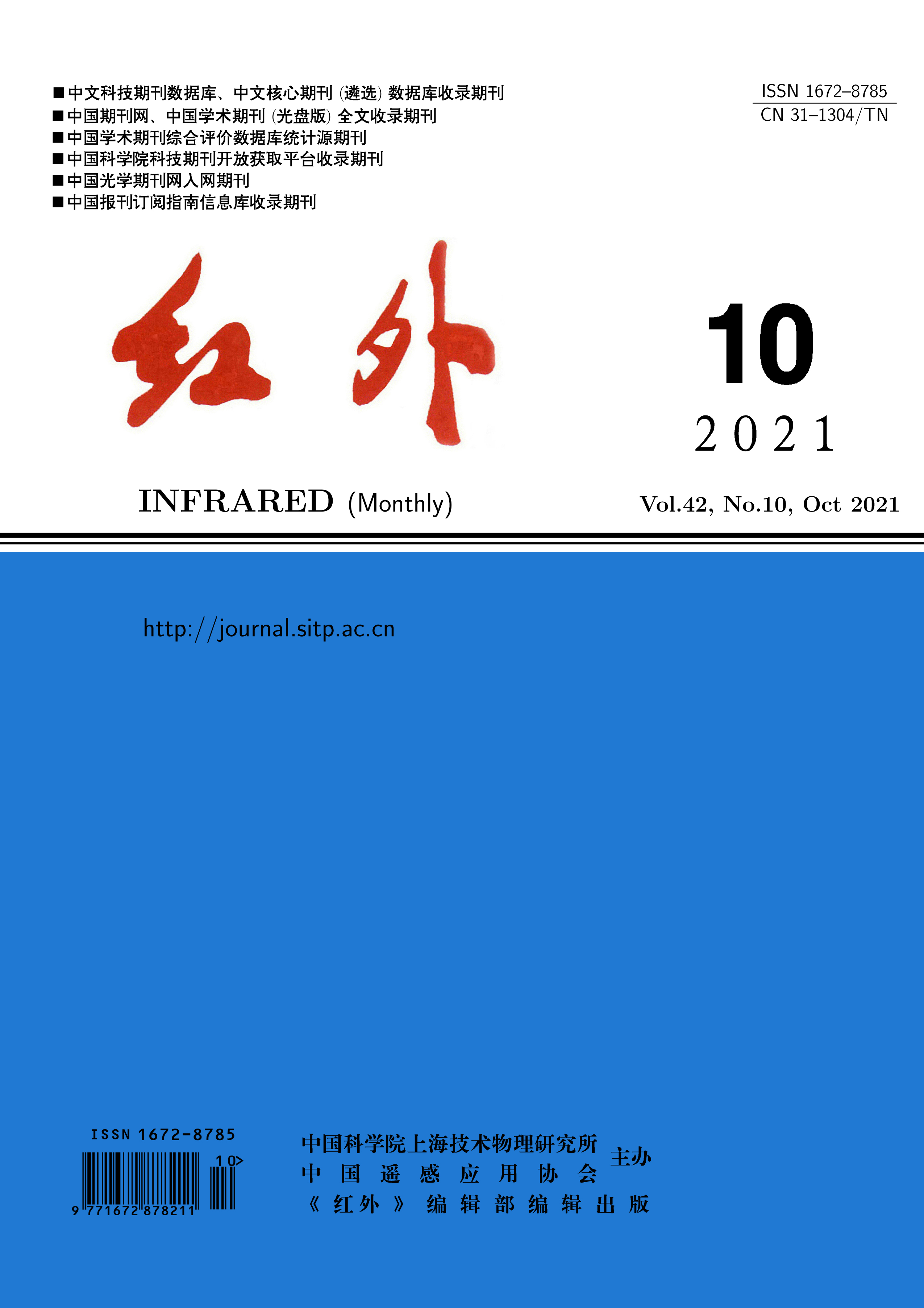
Al2O3/HfO2 composite films were deposited on GaAs substrates with different aspect ratios by thermal atomic layer deposition (ALD). Through the analysis of surface and energy dispersive spectrum(EDS), it is found that the deposition temperature has a great influence on the molar ratio of the composite films. With the increase of the aspect ratio, there are residues on the surface and in the grooves. With the increase of the ALD deposition temperature, the residues on the surface and in the grooves decrease, the mole ratio tends to be uniform. When the aspect ratio is 22, using the low deposition temperature of 150 ℃, there are basically no residues on the surface and in the grooves. However, when the aspect ratio is 425, there is a large amount of residues. Only when the temperature rises to 300 ℃, the residues on the surface and in the grooves can be obviously eliminated. ALD technology can realize all-round passivation of various device structures, which is unmatched by other chemical vapor deposition (CVD).
Different regulation technologies that affect the performance of Hg1-xCdxTe infrared detectors are briefly introduced, including material regulation (composition and temperature, doping concentration, pressure, and stress, etc.), device structure regulation (n-on-p, p-on-n, p-i-n, n-B-n, etc.), and process regulation (the influence of various process regulation on material preparation and device preparation). This research aims to properly regulate device performance, effectively reduce the dark current of the device, and improve the operating temperature of the device, so as to promote the development of Hg1-xCdxTe infrared detectors in reducing costs, decreasing power consumption, and improving reliability.
It mainly introduces the function of the dual-band back-adding film of type-II superlattice detector chip in the detector and its membrane system design and preparation process. The function of the film is to reduce the reflectivity of infrared light on the surface of the detector chip in the response band (3--5 m and 7--9 m), enhance the light response rate of the chip, that is, improve the performance of the chip. The main technical problems in the design and preparation of the back-adding film are studied and solved. According to the use environment of the detector, the corresponding firmness experiment, test and analysis of the film are carried out to draw conclusions. The results show that the spectral responsivity and firmness of this film can fully meet the requirements of the detector. At present, the preparation process of the back-adding film is an indispensable process step in the production process of type-II superlattice detector. The application prospect is good.
After the chip preparation process is completed, a certain thickness of the substrate is left for the chip, the excess cadmium zinc telluride substrate is removed by wire sawing technology, and then the polishing process is repeated. The Zn composition distribution and full width at half maximum (FWHM) test results of the cadmium zinc telluride substrate show that the CdZnTe substrate is of good quality and can be used to prepare the liquid phase epitaxial HgCdTe thin-film again. The properties of the newly prepared HgCdTe are qualified after standard detector chip technology. This research allows the reuse of the original substrate that is originally to be completely removed, improves the utilization rate of the CdZnTe substrate, and reduces the manufacturing cost of the detector.
In response to the demand for high-quality CdZnTe single crystal materials in the preparation of far-infrared detector substrates,a distributed zone melting and purifying furnace composed of zone melting furnace body, moving heating device, gas circuit system and electrical control system for preparing material of CdZnTe crystals is designed based on the principle and process realization method of zone melting purification in order to meet the need of high-purity raw materials for the growth of high-quality CdZnTe single crystals. The zone melting purification furnace is realized by the method of hydrogen impurity removal, nitrogen protection and servo mechanism to control the movement of the heating temperature field. The zonal purification experiments of tellurium, zinc and cadmium are carried out under the condition that the zonal narrow zone width is 15 mm and the incline angle is 7°. The results show that when the heating temperature is 50 K higher than the melting point and the moving speed is 0006 mm?s-1, the purity of the raw material for CdZnTe crystal preparation can be increased from 6N (999999%) to 7N (9999999%) if the zone-melting heating device moves more than 10 times. The heating temperature, the moving speed of the heating device and the moving stability of this furnace are better.
The aircraft stability tracking is carried out for the pilot′s training mission.In order to solve the problems such as small target, complex weather environment and bird disturbance, an aircraft tracking measurement method based on deep learning and correlation filtering is proposed in this paper.Firstly, the backbone network is selected and the algorithm model of deep learning is established. Then, a reference model for the actual scene is obtained by using a large number of aircraft images. And the features detected by the model are combined with the correlation filtering to achieve the stable tracking effect of the aircraft and generate the missing distance of the target.According to the tracking information and missing distance, the laser is turned on and the laser ranging principle is used to measure the real-time range of the aircraft.Finally, an aircraft capture and tracking experiment based on the photoelectric theodolite is carried out to verify the validity and feasibility of the model and algorithm.The experimental results show that the target information obtained by deep learning and correlation filtering can be used to capture and track long-range aircrafts. It successfully eliminates the interference of complex environment and birds, and the stable tracking of aircraft realizes.










